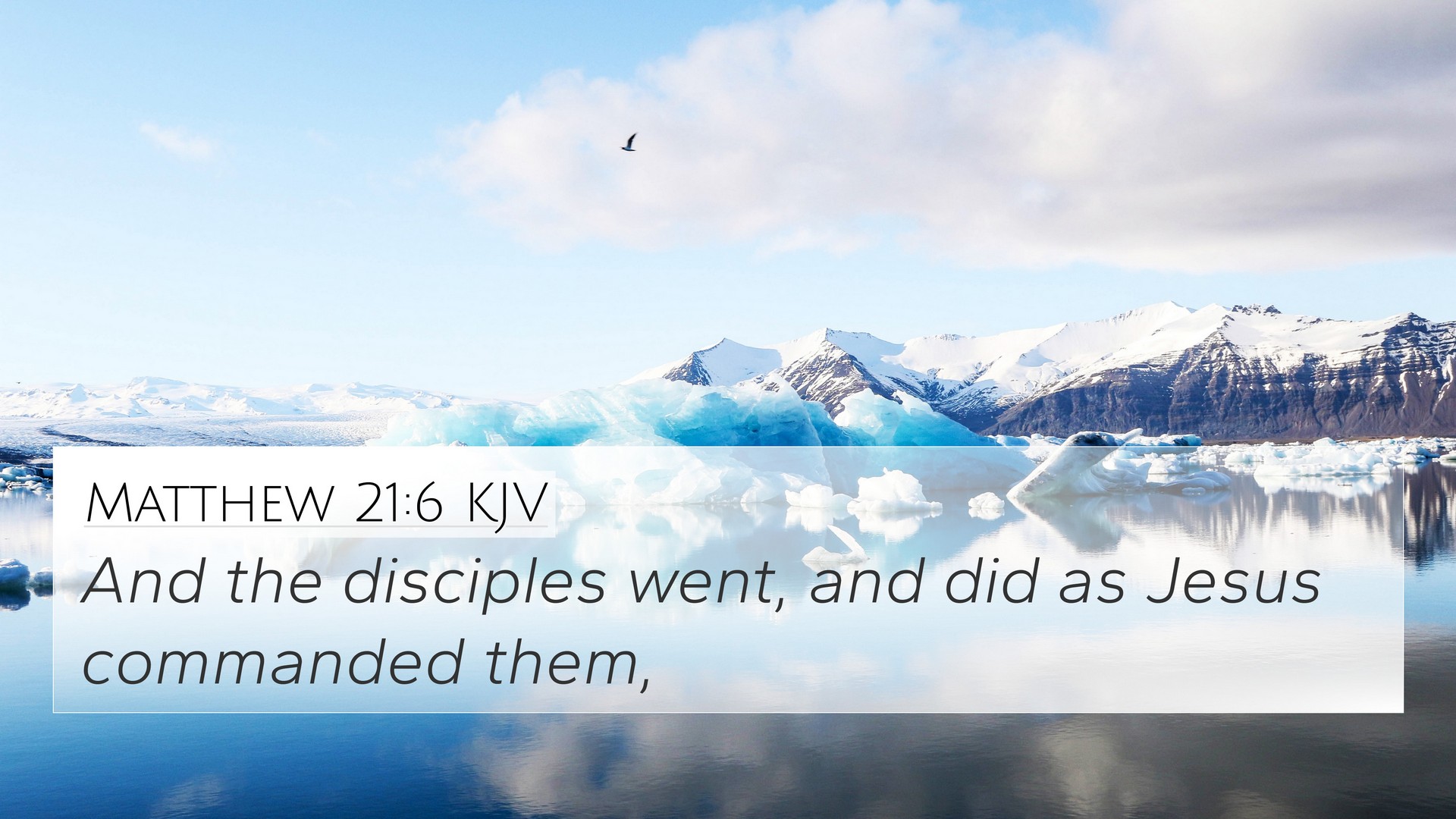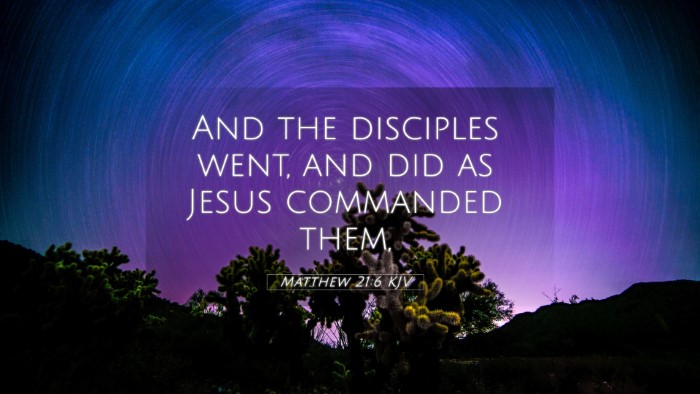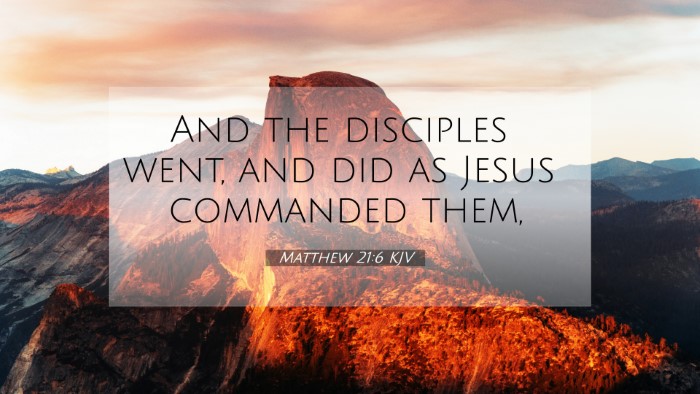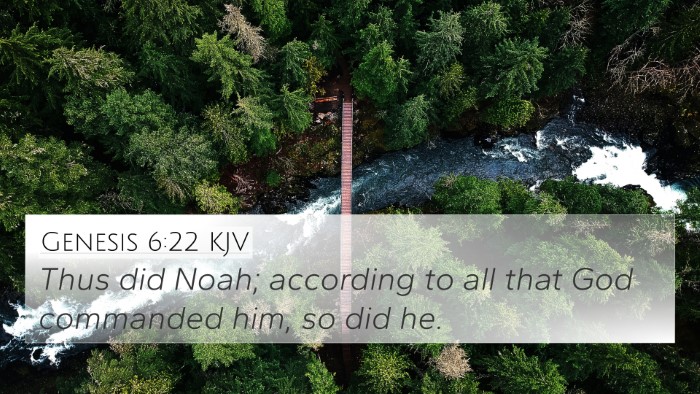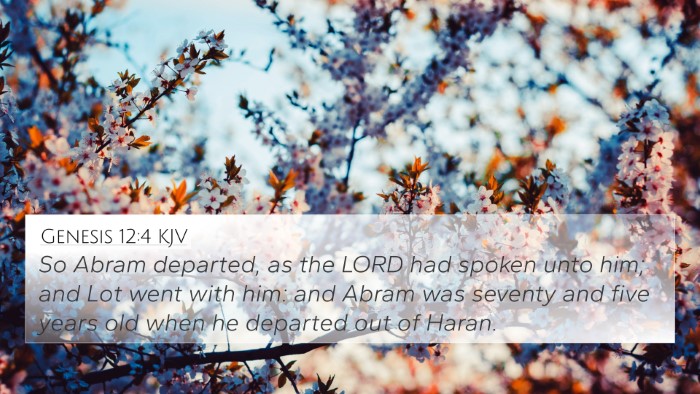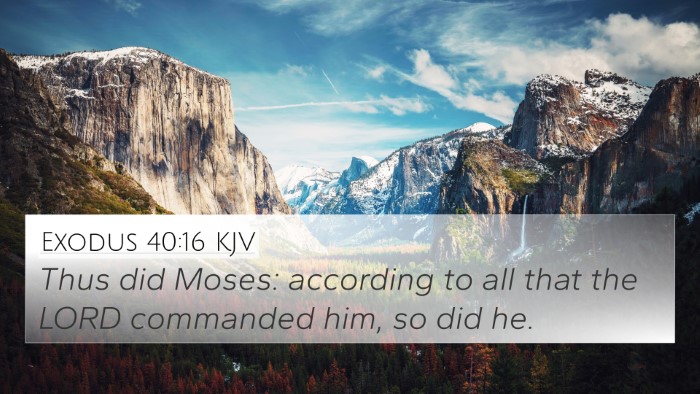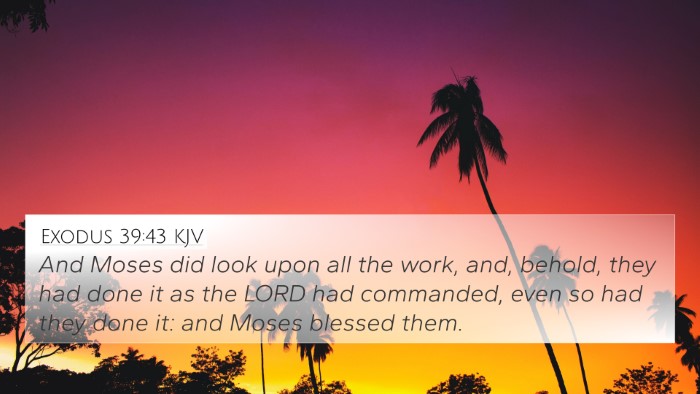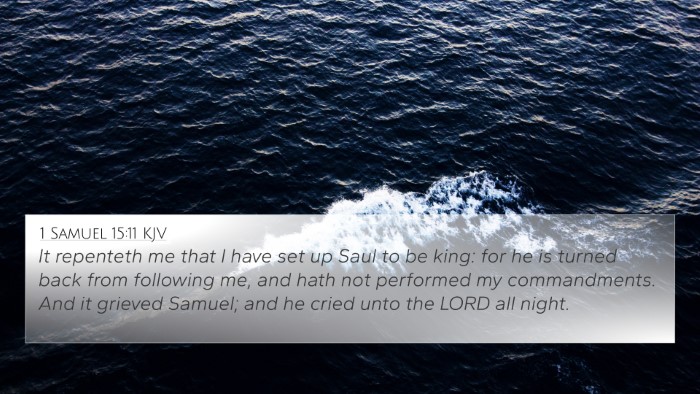Understanding Matthew 21:6
Matthew 21:6 states, “The disciples went and did as Jesus had instructed them.” This verse serves as a significant moment in the narrative of Jesus' triumphal entry into Jerusalem, highlighting themes of obedience, fulfillment of prophecy, and the acknowledgment of Jesus as the Messiah.
Summary of Meaning
This verse exemplifies the immediate and unquestioning obedience of the disciples to Jesus’ command. The act of fetching the donkey and colt is not merely a logistical necessity; it is an event laden with theological importance, fulfilling the prophecy found in Zechariah 9:9, which states, “Rejoice greatly, O daughter of Zion! Shout aloud, O daughter of Jerusalem! Behold, your king is coming to you; righteous and having salvation is he, humble and mounted on a donkey, on a colt, the foal of a donkey.”
Key Themes
- Obedience: The disciples’ readiness to follow Jesus’ command is a powerful example of faith and trust in God’s purpose.
- Fulfillment of Prophecy: This event links Jesus’ entry into Jerusalem to longstanding biblical prophecies, showcasing the unity of the Old and New Testaments.
- Messianic Recognition: The act of riding a donkey signifies Jesus’ kingship in a way that contrasts with earthly rulers, emphasizing His humble approach to leadership and salvation.
Connecting Bible Verses
This verse connects with several other scriptures, building a web of understanding about Jesus' role in fulfilling God's plan:
- Zechariah 9:9: This prophetic text directly foreshadows Jesus’ humble entrance as a king.
- Luke 19:35-37: The parallel account of Jesus’ triumphal entry highlights similar details regarding the disciples’ actions and the crowd’s reactions.
- John 12:12-16: This passage elaborates on the significance of the event as a fulfillment of prophecy recognized by the disciples after Jesus’ glorification.
- Matthew 16:20: Jesus tells His disciples not to reveal His identity as the Messiah until the appropriate time, illustrating the progressive revelation of His purpose.
- Matthew 26:55: This moment in the gospel sets a backdrop for understanding the contrasting responses to Jesus throughout his ministry.
- Isaiah 62:11: Offers another glimpse into the prophetic declarations about a coming savior, reinforcing the theme of divine expectation.
- Philippians 2:6-11: This New Testament passage speaks to the humbling of Christ and the exaltation that follows, tying back to His humble entry into Jerusalem.
- Psalm 118:25-26: The crowds later cry out phrases from this psalm during Jesus’ entry, marking Him as the blessed one who comes in the name of the Lord.
- Mark 11:1-10: Another synoptic view of Jesus’ entry, further cementing the event’s importance in the gospel accounts.
- Acts 2:36: The proclamation of Jesus as Lord and Christ points back to the culmination of His earthly mission, set into motion by events like the one in Matthew 21:6.
Lessons and Reflections
- Importance of Obeying God's Commands: The disciples' obedience illustrates the importance of responding affirmatively to God’s directives, even when the path is unclear.
- The Humility of Christ: Reflecting on Jesus’ choice to enter Jerusalem on a donkey can encourage believers to embrace humility and service as foundational aspects of their faith.
- Recognizing God’s Prophetic Word: Understanding the connections between Old and New Testament prophecies helps believers see the unity of scripture and deepen their faith in God's sovereign plan.
Thematic Connections
As we delve into the themes presented in Matthew 21:6, this verse serves as a bridge connecting various biblical themes and teachings. The act of the disciples obeying Jesus serves as a model for believers today, emphasizing:
- How to find cross-references in the Bible can deepen understanding.
- Identifying connections between Old and New Testament enhances theological comprehension.
- Cross-referencing parallels highlights God's consistent message throughout scripture.
